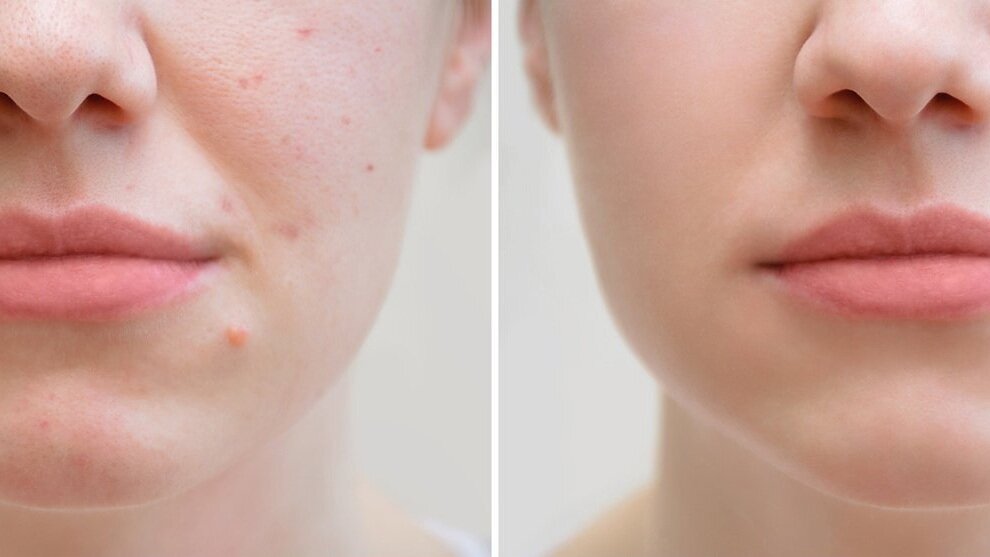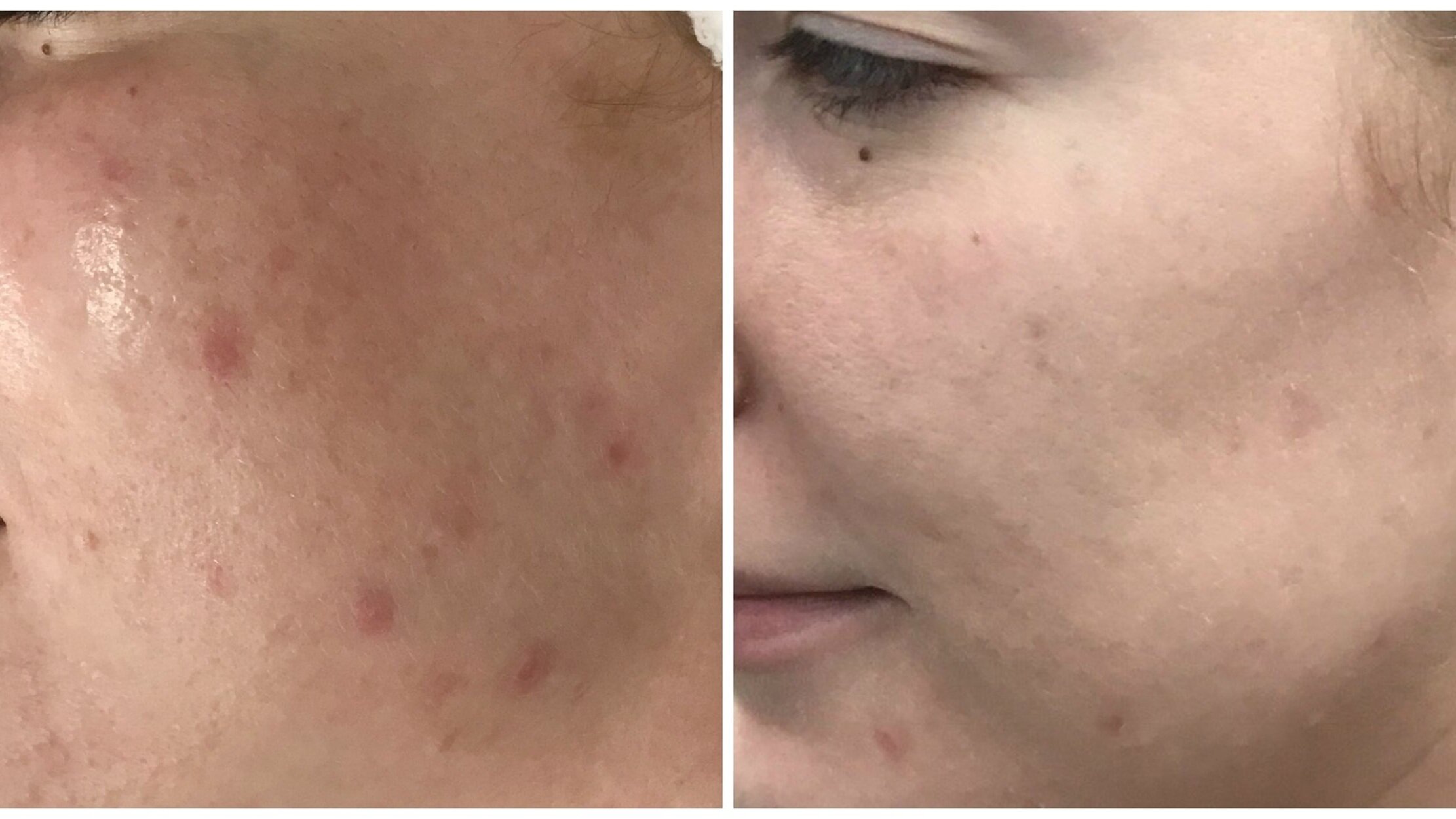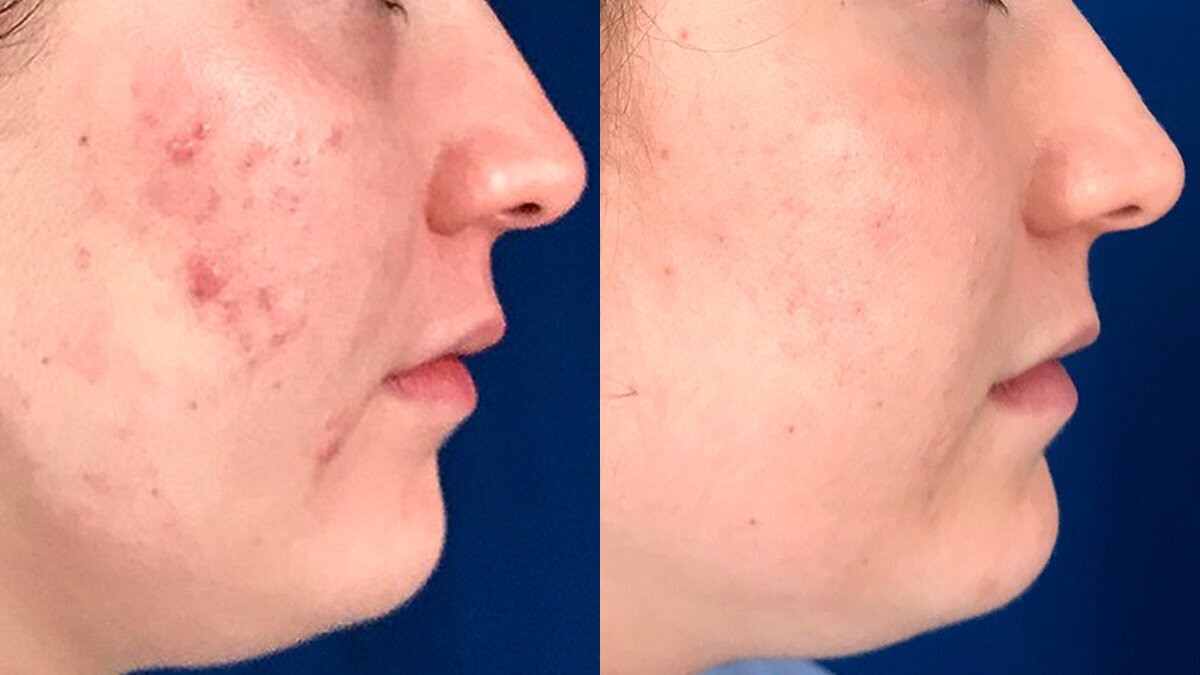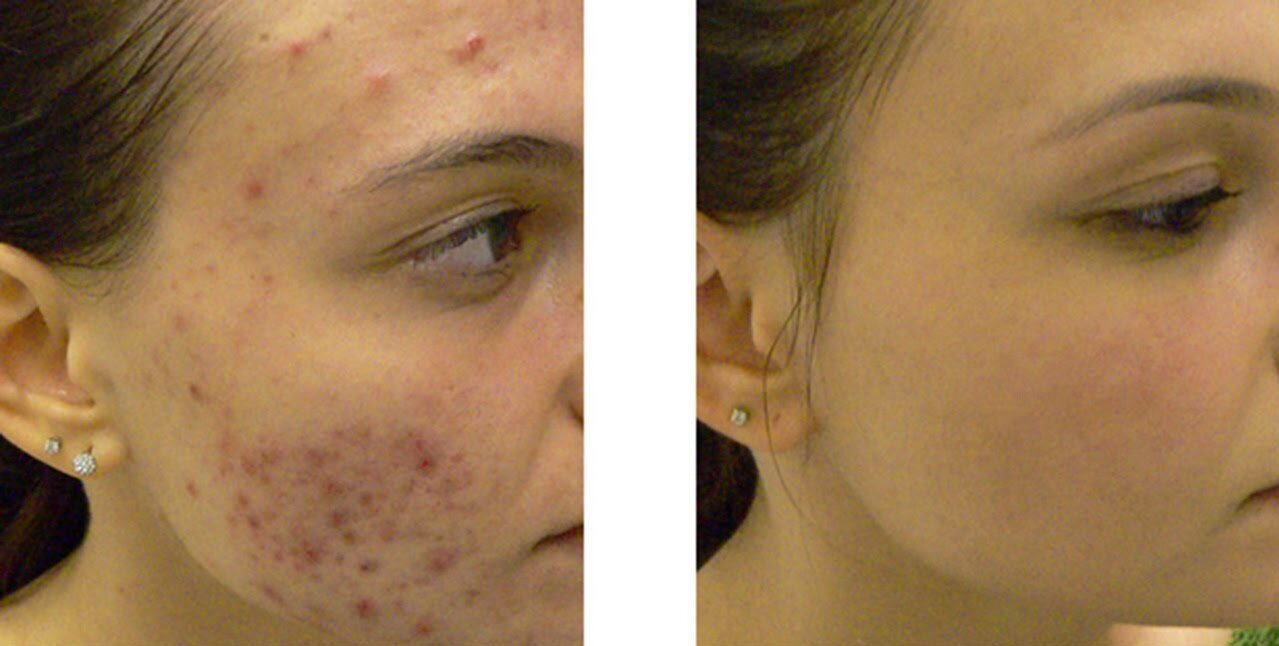Acne Facial Treatments in Carlsbad & Encinitas, CA
Unlock Your Radiance: Transforming Lives Through Acne Treatment at REJUV
Treating and Preventing Acne
Are you tired of trying countless acne treatments with little to no success? Discover the world of Acne Facials, a specialized treatment designed to target the root causes of acne and improve your skin’s health and appearance. Get ready to dive into the science, techniques, and post-treatment care to help you achieve the clear skin you’ve been longing for.
Key Takeaways
Acne facials offer a targeted approach to treating mild to moderate acne and can improve skin health.
A successful facial requires an individualized treatment plan tailored by a professional for best results.
Post-treatment care involves tailoring skincare, assessing lifestyle factors, recognizing severe acne symptoms and exploring alternative treatments for persistent breakouts.
Understanding Acne Facials
Acne facials are more than just a pampering experience; they offer a targeted approach to treating acne-prone skin. These specialized treatments focus on deep cleansing, exfoliation, and extraction to improve the health and appearance of your skin. But who can benefit from an acne facial? Ideal candidates are those with mild to moderate acne, while individuals with severe acne should consult a dermatologist for more advanced treatment options.
Simply put, acne facials serve as a powerful ally in your fight against acne, offering an effective alternative or supplement to topical acne medications. A grasp on the science behind acne facials and a clear identification of ideal candidates can guide you in deciding if this treatment suits your needs.
The Science Behind Acne Facials
The science behind acne facials revolves around targeting the main causes of acne – excess oil production, clogged pores, and inflammation. By employing a combination of techniques and products, acne facials can help address these issues without making acne worse. Some of the active ingredients commonly found in acne facial products include benzoyl peroxide, salicylic acid, and azelaic acid, which are known for their antibacterial properties and ability to reduce skin redness and irritation.
While the effectiveness of some topical treatments, such as zinc and sulfur, is still inconclusive, other ingredients like retinoids and salicylic acid have been proven to be beneficial for acne-prone skin. Keep in mind, every person has unique skin characteristics. Therefore, consulting a skin care professional or a board-certified dermatologist can help determine the most suitable approach for your skin.
Ideal Candidates for Acne Facials
As mentioned earlier, acne facials are best suited for individuals with mild to moderate acne, also known as acne vulgaris. For those with more severe cases, such as cystic or nodulocystic acne, it’s recommended to consult a dermatologist for more advanced treatment options, like prescription medications or hormone therapy.
Recognizing your acne type and its severity is a key step in selecting an appropriate treatment plan. While acne facials can significantly help those battling with mild to moderate acne, for severe cases, professional assistance is advised before pursuing any self-treatment.
Essential Steps in an Acne Facial
An acne facial is a multistep process that begins with a consultation and skin analysis, followed by a customized treatment plan tailored to your specific skin concerns and needs. This comprehensive approach ensures that the treatment targets the root causes of your acne while addressing any other skin issues you may be experiencing.
The consultation and skin analysis allow the esthetician to gain a better understanding of your skin type, concerns, and goals, while the customized treatment plan ensures that the acne facial addresses your unique needs. We will now explore these vital steps further and understand their role in ensuring a successful acne facial treatment.
Consultation and Skin Analysis
The consultation and skin analysis are crucial steps in an acne facial, as they help the esthetician understand your skin type, concerns, and goals. During this process, various tools and technologies may be used. This information assists the esthetician in formulating a more efficient, customized treatment plan to tackle your precise skin issues for a successful outcome.
It’s important to be honest and thorough when discussing your skin concerns, medical history, and any medications you’re taking with your esthetician. Such information aids in making well-informed decisions about your optimal treatment plan, thus ensuring a safe and effective acne facial experience.
Customized Treatment Plan
Once the consultation & skin analysis are complete, the esthetician will develop a customized treatment plan based on your unique skin concerns and needs. This plan takes into account factors such as:
location
skin type
medical and family history
acne severity
By tailoring the treatment plan to your specific needs, the esthetician can ensure that the acne facial will effectively address your acne and provide the best possible results.
Common components of a customized acne facial treatment plan include:
Skin analysis
Customized exfoliation mask
Extractions (as necessary)
Application of acne-fighting medications
Specialized acne treatment to address and prevent blemishes
Remember that every person’s skin is different, so it’s essential to work with your esthetician to develop a plan that’s best suited for your individual needs, including addressing any skin discoloration concerns.
In-Depth Look at Acne Facial Techniques
Acne facial techniques are designed to provide deep pore cleansing, exfoliation and extraction, and soothing and healing masks to enhance skin health and aesthetics. Each technique serves a specific purpose in the overall treatment process, ensuring that your skin is thoroughly cleansed, exfoliated, and treated for optimal results.
Deep Pore Cleansing
The deep pore cleansing process in an acne facial serves to eliminate makeup, dirt, and excess oil from the skin, thereby aiding in the unclogging of pores and decreasing the probability of acne breakouts. This process may include cleansing the neck, chest, and shoulders, depending on the severity of your acne. The most effective techniques for deep pore cleansing involve using Hydrafacial machines for extractions and hydradermabrasion and/or Plason Plasma device to kill off any remaining bacteria.
This pore cleansing is an essential step in the acne facial process and lays the foundation for the rest of the treatment. A clean and clear canvas allows for better penetration of acne-fighting products and more effective results.
Exfoliation and Extraction
Exfoliation and extraction are crucial components of an acne facial, as they help eliminate dead skin cells, debris, and impurities, as well as extract blackheads and blemishes, resulting in a clearer and healthier complexion. Acne facials employ various exfoliation methods, including physical, chemical, and enzymatic techniques.
Salicylic acid peels, for instance, are highly effective in reducing inflammation, redness, and swelling caused by acne, while also regulating oil production and exfoliating the skin. Beyond promoting clearer skin, exfoliation and extraction also help in preventing future breakouts by unclogging pores and maintaining skin cleanliness and health.
Soothing and Healing Masks
After deep cleansing, exfoliation, and extraction, soothing and healing masks are optionally applied to the skin to calm inflammation, reduce redness, and promote healing of acne-prone skin. These masks often contain ingredients such as:
Green tea
Apple cider vinegar
Cucumber
Chamomile
Centella asiatica
These ingredients have been shown to soothe inflammation, heal blemishes, and reduce redness.
Though soothing and healing masks offer temporary respite from acne symptoms, they do not serve as a long-term remedy. However, they can contribute to improving the overall condition of the skin and reducing the frequency of acne outbreaks when used in conjunction with a comprehensive skincare regimen and lifestyle changes.
Post-Treatment Care and Maintenance
Having learned about acne facials and the associated techniques, understanding post-treatment skin health and appearance maintenance becomes imperative. Post-treatment care and maintenance involve:
Implementing a skincare regimen tailored to acne-prone skin
Assessing lifestyle factors that may be influencing acne
Recognizing the signs of severe acne
Exploring alternative treatments for persistent acne
By being proactive in your post-treatment care and maintenance, you can ensure that the benefits of your acne facial are long-lasting, and your skin remains clear and healthy.
Skincare Regimen for Acne-Prone Skin
A skincare regimen for acne-prone skin should include:
Gentle cleansing
Exfoliation
Moisturizing
Use of acne-fighting products
Sun protection
It is recommended to wash your face twice a day to help maintain the skin clean and free of excess oil and bacteria. Start introducing products with active ingredients such as benzoyl peroxide, salicylic acid, and niacinamide gradually, one product at a time, to avoid skin irritation.
Bear in mind that each individual’s skin is unique, and a treatment effective for one might not work for another. It’s essential to consult with a skincare professional to determine the best skincare regimen for your acne-prone skin.
Lifestyle Factors Affecting Acne
Beyond skincare, it’s important to recognize that lifestyle factors such as stress, diet, and exercise can impact acne severity. Some tips to manage acne include:
Incorporating relaxation techniques to manage stress levels
Ensuring adequate sleep
Following a healthy diet
Exercising regularly
By addressing these lifestyle factors, you can help manage acne and reduce breakouts.
Diet also plays a role in acne flare-ups. Consuming:
Refined grains and sugars
Dairy products
Fast food
Chocolate
High-glycemic foods
Certain lifestyle factors may contribute to acne or even worsen acne. Addressing these lifestyle factors and making the necessary adjustments can further enhance your skin health and keep acne under control.
Recognizing Severe Acne
It is vital to identify severe acne, including adult acne, to seek timely professional treatment, given that acne facials may not suffice for more advanced cases, such as acne scars. Severe acne can manifest as cysts, nodules, and deep, painful lesions that are often red and inflamed. If your acne does not respond to self-care and over-the-counter treatments, it’s advisable to schedule an appointment with a physician.
A dermatologist may prescribe a variety of medications, such as antibiotics, retinoids, or hormonal treatments, both in topical and oral forms, to effectively treat severe acne. Recognizing when to seek professional help is a vital step in your journey to clear, acne treated skin, and finding the right way to treat acne with topical acne medication for your needs.
Alternative Treatments for Stubborn Acne
For those struggling with stubborn acne that doesn’t respond to traditional treatments, alternative acne treatments may be worth considering. Prescription medications, therapies, and lifestyle changes may be viable options for treating stubborn acne and should be discussed with a healthcare professional. Prescription-strength medications can be a great help in easing skin problems. They are effective in reducing oil production, swelling and treating bacterial infection.
Before opting for alternative treatments, discuss potential risks, benefits and the expected timeline for results with your physician. Note that prescription acne drugs may take four to eight weeks to show results. By exploring all treatment options and working closely with your healthcare provider, you can find the right solution to manage your stubborn acne.
Targeted and effective approach
Focusing on deep pore cleansing, exfoliation, extraction, and soothing treatments. By understanding the science behind acne facials, identifying ideal candidates, and implementing proper post-treatment care and maintenance, you can achieve clearer, healthier skin. Remember that everyone’s skin is different, and it’s crucial to consult with a skincare professional to determine the best treatment plan for your unique needs. So, go ahead and take the first step towards the clear skin you’ve always wanted.
With a combination of acne therapy options like HydraFacial MD, LightStim LED Therapy, CryoSkin CryoFacials, Plason PlasmaClear, Nitrogen Mist Therapy, Celluma Biophotonic Therapy and more! We help our clients get their breakouts under control. Of course, there are many different types of pimples, but through a careful analysis, we design a customized therapy plans & memberships for our clients, based on their skin condition, acne type, skin type, and ultimate goals. Once the acne has subsided, we can improve the overall skin health by targeting any remaining acne scars with non-invasive resurfacing treatments and specialized Dermabuilder & Growth Factor boosted facials.
Frequently Asked Questions
What does an acne facial do?
Acne facials help to clear out blackheads and remove dead skin from blocked pores, making them a beneficial addition to regular acne care routines.
Are facials good for acne?
Facials can help with mild acne breakouts, and are suitable for removing whiteheads and blackheads. However, they may not be suitable for more severe cases of acne.
What does hormonal acne look like?
Hormonal acne typically presents as whiteheads, blackheads, papules, pustules, nodules, and cysts, usually located on the jawline, chest, or back. The skin may be bumpy, congested, and appear dull.
How does the consultation and skin analysis help in creating a personalized acne facial treatment plan?
The consultation and skin analysis enables the esthetician to gain insights into your unique skin condition and create a tailored acne facial treatment plan that addresses your individual needs.
What are some alternative treatments for stubborn acne that doesn't respond to traditional methods?
Talking to your doctor about alternative treatments such as prescription medications, therapies, and lifestyle changes may be a good way to manage stubborn acne that doesn't respond to traditional methods.














